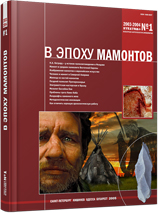О некоторых группах изделий с вторичной обработкой ряда мезолитических стоянок Северо-Западного Причерноморья
Some Groups of Retouched Stone Tools from Mesolithic Sites on the Northwest Coast of the Black Sea
Author(s): Svetlana P. SmolyaninovaSubject(s): History, Archaeology
Published by: Издательский дом Stratum, Университет «Высшая антропологическая школа»
Summary/Abstract: The paper compares scrapers and trapezes, the most typical and common Mesolithic stone tools, from the sites of Tsarinka, Poznanka and Girzhevo. Morphological features of these artifacts indicate that lithic assemblage from Tsarinka should be dated later than sites with trapezes from the Rogalik-Peredelskoye Palaeolithic region.Our analysis of lithic inventories from Tsarinka, Poznanka and Girzhevo revealed several trends in quantitative and qualitative changes among the tools from Early to Late Mesolithic. These include: 1) decrease in size of scrapers and trapezes, 2) decrease in quantity of scrapers made of blades with the simultaneous increase in number of those made of flakes, 3) increase in number of scrapers with slanting working edges accompanied by decrease in number of tools with perpendicular and steep working edges, 4) change from the use of coarse blunting retouch to the use of minute retouch in the manufacture of trapezes in the Mesolithic, and to utilization of coarse sharpening retouch, subsequently supplemented with planing off the dorsal side of a tool, in the Neolithic, and 5) change of proportions among trapezes from low elongated shapes in Final Palaeolithic to shorter forms in Early Mesolithic, which from then on remained the basic form of trapezes throughout the Mesolithic and Neolithic. In Late Mesolithic and Neolithic there also appeared medium-high and high microliths.The assemblage from Poznanka seems to date to somewhat earlier period of Late Mesolithic than lithic inventory from Girzhevo. Lithic artifacts from these two sites show differences in size, proportions, retouching techniques and composition that are apparently due to a chronological distance between the sites rather than to cultural differences between them. In general, the research provided more data on development of the two major tool types of the Grebenikian culture in time.
Journal: Stratum plus. Археология и культурная антропология
- Issue Year: 2004
- Issue No: 1
- Page Range: 248-266
- Page Count: 19
- Language: Russian
- Content File-PDF

